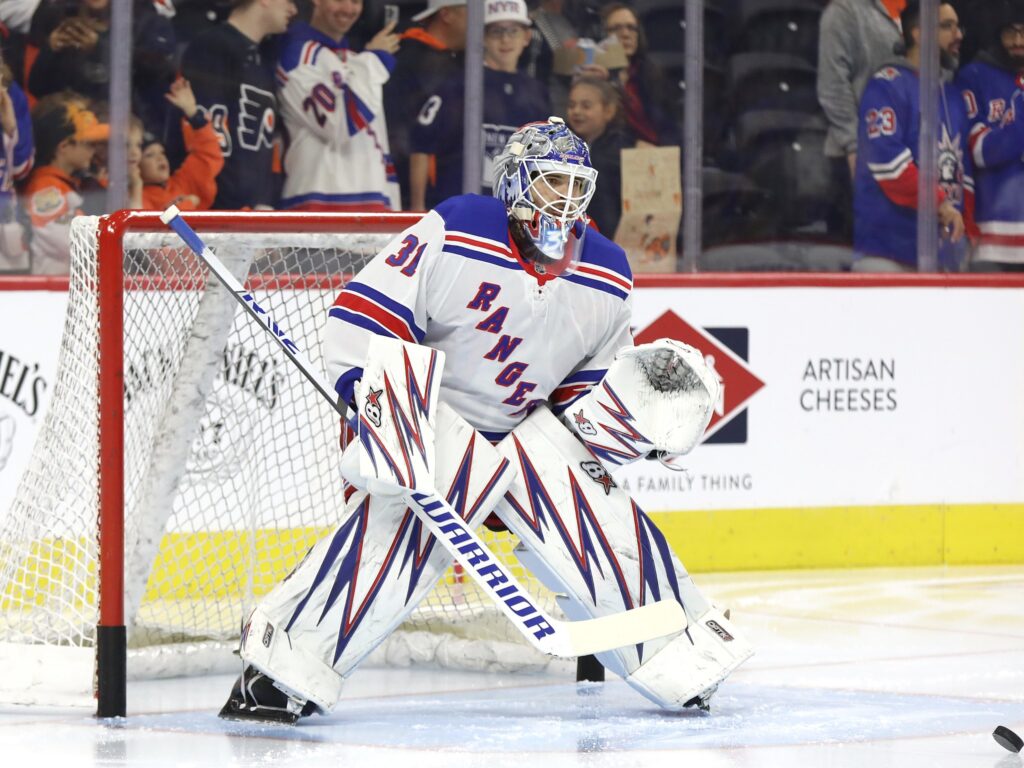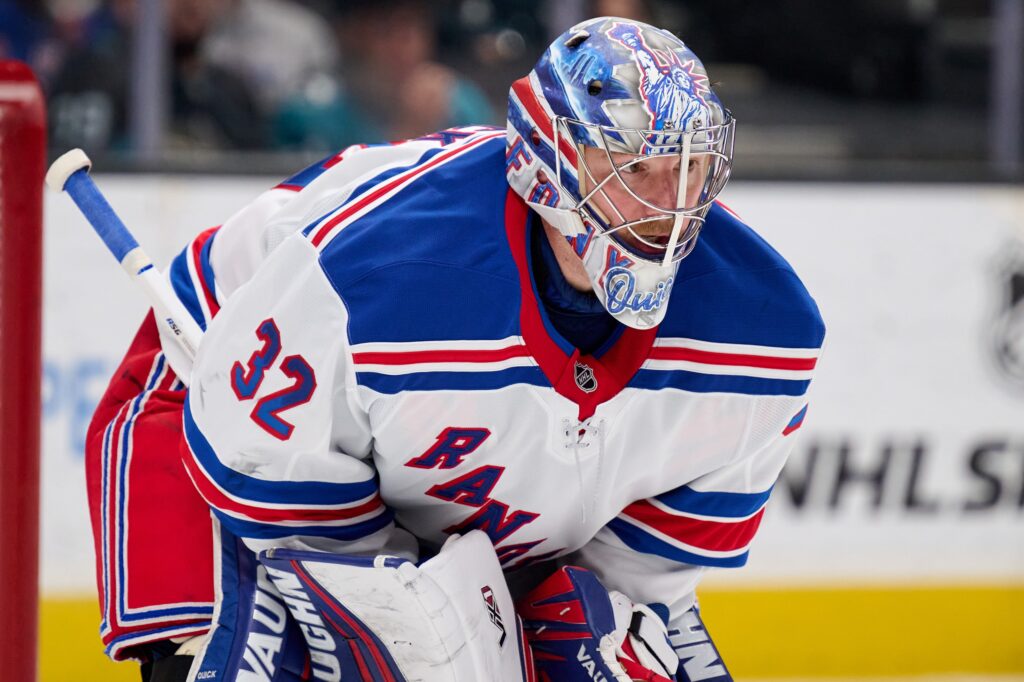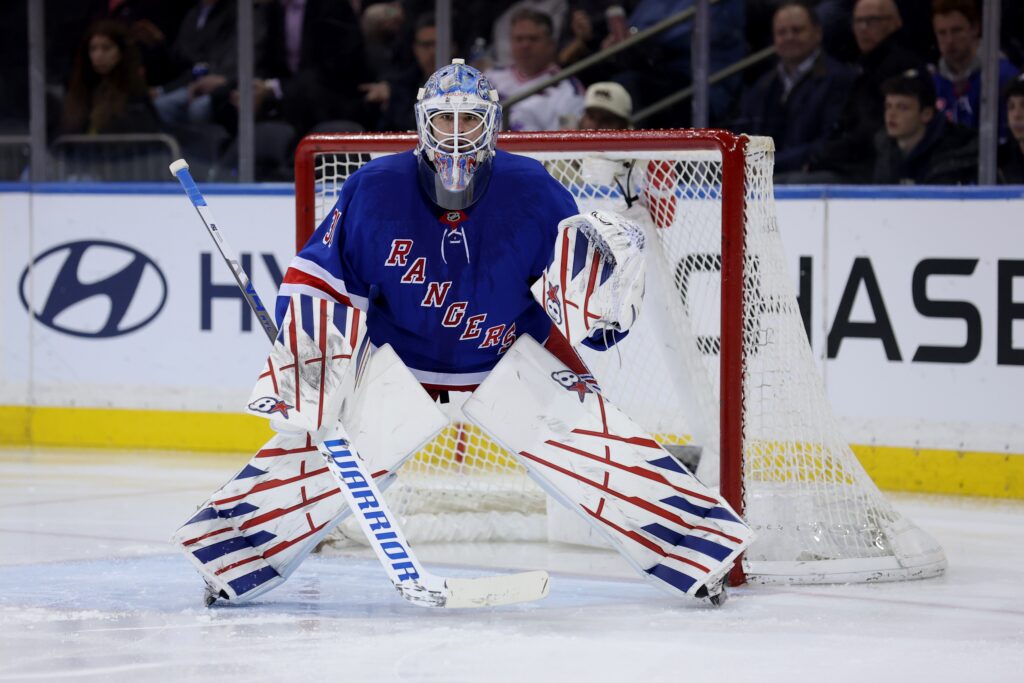The ink is barely dry on the most lucrative contract ever handed to a goaltender, and already the weight of a franchise, a city, and a rapidly closing Stanley Cup window rests squarely on the shoulders of one man: Igor Shesterkin. As the New York Rangers gear up for the 2025-26 season, their entire strategy, their every hope, is anchored to the performance of their $92 million man. It’s a high-stakes gamble that could either cement a championship legacy on Broadway or become a cautionary tale of a front-loaded contract crippling a contender. With a new, demanding coach behind the bench and an aging icon providing backup, the Rangers’ situation between the pipes is a fascinating, high-wire act of reliance on a superstar, tempered by the necessity of future-proofing the most critical position in the game.
The $92 Million Mandate
Let’s not mince words: an eight-year, $92 million deal with an $11.5 million AAV isn’t just a contract; it’s a declaration. It’s the front office pushing all their chips into the middle of the table and telling Igor Shesterkin, “You are the system. You are the solution.” The pressure is immense and unprecedented. The Rangers aren’t just paying for the Vezina-winning phenom of 2021-22; they’re investing in the belief that he can be that guy, night in and night out, for the better part of the next decade.
However, the 2024-25 campaign gave the organization and its fanbase a sobering dose of reality. Shesterkin posted career-worst numbers across the board: a 27-29-5 record, a 2.86 GAA, and a .905 save percentage. For any other starting goalie, those might be passable, if not good, figures. For a man about to embark on a record-shattering contract, they were alarming. On paper, it was a regression. But hockey, as we know, is rarely played on paper.

The underlying metrics tell a more nuanced story. Despite the shaky traditional stats, Shesterkin finished seventh in the entire league with a Goals Saved Above Expected (GSAx) of 21.6. This is a critical distinction for the discerning fan. It means that while the puck was going in more often, he was still stopping a hell of a lot of shots that had no business being stopped. He was frequently left out to dry by sloppy defensive-zone coverage and a lack of structure, a recurring theme for the Blueshirts.
Enter Mike Sullivan. The hiring of the two-time Stanley Cup-winning coach is perhaps the most significant offseason move for Shesterkin’s immediate future. Sullivan’s reputation is built on a foundation of discipline, accountability, and a suffocating defensive structure. He doesn’t tolerate passengers or passengers-by-committee in his own end. For a goaltender who has often been forced to be the team’s best penalty killer, best defenseman, and best player all at once, the prospect of a predictable, responsible system in front of him must feel like a godsend. If Sullivan can get the players to buy in and execute, it will simplify Shesterkin’s job immeasurably, allowing his sublime talent to shine through without the constant need for five-alarm heroics. The formula is clear: Sullivan’s structure plus Shesterkin’s elite talent could be the one-two punch that puts the Rangers back into legitimate Cup contention.
The Elder Statesman and the Safety Net
While Shesterkin is the undisputed king, every monarch needs a trusted advisor. For the third straight season, that role falls to Jonathan Quick. Now 39 and turning 40 during the season, Quick returns on a one-year deal worth $1.55 million, a testament to the value the organization places on his experience and locker-room presence. He is a three-time Stanley Cup champion, a former Conn Smythe winner, and a guy who has seen everything this league can throw at a goaltender. That kind of leadership is invaluable.

However, his on-ice contributions are a far greater question mark. Last season was a struggle for the veteran, and at his age, the rigors of an 82-game schedule are unforgiving. The Rangers cannot afford to lean on him for more than 15-20 starts, tops. His role is clearly defined: provide quality spot starts, mentor Shesterkin, and be the ultimate “break glass in case of emergency” option. Quick is a beloved figure and a proven winner, but the team’s fortunes in 2025-26 will not be decided by him; they will be decided by the man he backs up.
Securing the Future: Garand and Boyko
Smart organizations are always looking two, three, or five years down the road, and the Rangers’ recent re-signings of prospects Dylan Garand and Talyn Boyko demonstrate a commitment to maintaining a robust goaltending pipeline. With Louis Domingue heading to the KHL, the Hartford Wolf Pack crease is now Garand’s to command.
The 23-year-old is coming off a breakout season in the AHL, earning an All-Star nod with a 20-10-8 record and a solid .913 save percentage. He has shown steady improvement throughout his 112 AHL appearances and is now poised to take on a “star’s workload.” This is a crucial development year for him. If he can build on last season’s success and prove he can handle the grind of being the undisputed number one in the minors, he could realistically push for the NHL backup job as soon as next year. His one-year, two-way contract is essentially a “show me” deal, and he has a legitimate opportunity to force his way into the big-league conversation.

Complementing Garand is the towering presence of Talyn Boyko. At 6-foot-7, the 22-year-old is an athletic anomaly who combines size with surprising agility. After a strong showing in the ECHL where he posted a .913 save percentage over 33 games, he was excellent in his five-game AHL cameo, recording a .917 save percentage and a shutout. Boyko’s more extensive professional resume gives him the inside track for the primary backup role in Hartford. His development provides the Rangers with another intriguing, high-upside asset in the system, ensuring that the organizational depth chart remains stocked for the foreseeable future.
The Final Verdict: Championship or Bust
When you zoom out, the Rangers’ goaltending picture for 2025-26 is one of extreme top-end talent paired with calculated risk. The team is all-in on Igor Shesterkin, not just as a goalie, but as a franchise cornerstone capable of carrying them to the promised land. His performance, especially under the new defensive regime of Mike Sullivan, will be the single biggest determinant of their success. The pieces around him are in place, but in the modern NHL, you don’t win without elite, game-stealing goaltending, and the Rangers have just paid a historic price to secure it.
Jonathan Quick provides a veteran safety net, while the development of Dylan Garand and Talyn Boyko in Hartford offers hope for a stable and cost-effective future. But the future is not now. The time for this core group is now. The Stanley Cup window is perceived to be narrowing, and every season that passes without a parade is a missed opportunity. For the New York Rangers, the path forward is clear, and it leads directly through the crease of their $92 million goaltender. It’s a gamble, but it’s one they had to make. Now, all that’s left is to see if it pays off.
Created with the aid of Gemini AI
